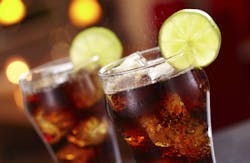Water treatment dealers that are not actively and currently involved with these customers may find viable sales opportunities in the food and beverage markets. The importance of water quality in food service is undeniable according to recent articles and news releases published in Water Technology and WaterTechOnline.com. Moreover, with the increased attention on water and food supply challenges in coming decades, there are more issues to solve in this industry than taste, color and odor.
According to an infographic, submitted by Dow Water & Process Solutions, using information from the United Nations and the Brookings Institution and can be found in this special topic food service newsletter, we will need 30 percent more water and 50 percent more food by 2030. The challenge is set for manufacturers, water dealers, and food and beverage store owners and managers: Produce the best possible product while also conserving valuable resources.
Improving food quality with water
Water Technology and its online components, including Water e-News Daily, have increased coverage of the food and beverage markets, and particularly how water quality plays a role. We have featured several articles on the importance of ice quality. Also on ice, there has been a significant movement for different types of iced drinks, such as iced tea and iced coffee, which are no longer seasonal dependent. Particularly, nugget and chewable ice consumption have increased.
From cooking to consumption, water quality is known to be an important factor in the food and beverage markets. According to an article, “The effect of water quality on food,” by O. Peter Snyder of the Hospitality Institute of Technology and Management,“When fruits and vegetables are heated (cooked) in water, the amount of calcium ions in the water will influence the textural properties of the products. For example, calcium ions may form insoluble salts (calcium pectates) that are beneficial for maintaining firmness in cooked fruits and vegetables. However, if there is an excessive amount of calcium ions in the water, the fruits and vegetables may become excessively tough, and dried beans and dried peas will be difficult to rehydrate when cooked.”
In addition to this newsletter, be sure to read Water Technology as we continue to increase our coverage of the food service market. In addition to meeting customer demands for delectable menu items, restaurant and other food and beverage providers will look to your company for energy- and water-reduction strategies when using softening and filtration equipment. In this special newslette,r we tackle several areas including coffee, beer and more.
